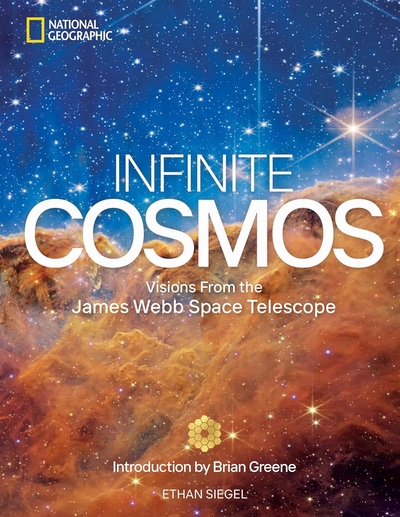Review: Infinite Cosmosby Jeff Foust
|
| That examination of the science of JWST, about half of the book, is where Infinite Cosmos excels. |
Infinite Cosmos is a reminder of why JWST was worth all that effort getting it into space. The large-format book, written by astrophysicist Ethan Siegel, is primarily a collection of images of JWST during its development and launch, and from JWST after it started its long-anticipated science observations in 2022. The latter includes images showing the telescope’s contributions in fields from planetary astronomy to cosmology.
This is not the first book to study JWST in images: Inside the Star Factory, published last year, used photographs to chronicle the development of the telescope (see “Review: Inside the Star Factory”, The Space Review, January 2, 2024). But while that book focused on JWST’s development, Infinite Cosmos balances that with the science it is performing, explaining what JWST can do that other telescopes cannot (such as side-by-side comparisons of Hubble and JWST images of the same objects), and how it is making discoveries like distant galaxies from the very early universe.
That examination of the science of JWST, about half of the book, is where Infinite Cosmos excels. The first half, covering development, launch, and commissioning, is fine, but falls short of the level of detail of Inside the Star Factory. Notably, the examination of JWST’s development in this new book feels a little airbrushed: there are almost no references to the technical and programmatic problems developing JWST, or its threats of cancellation amidst delays and budget overruns, or even the controversy over the name itself. A reader not otherwise familiar with those issues would come away from the book with no idea of the problems and near-death experiences the telescope had in its development.
Those problems have been largely forgotten in general as JWST has exceeded scientific expectations in the last two-plus years. JWST is pleasing scientists and the general public alike, the latter with images like those in the pages of this book. JWST has enough fuel on board to operate at the Earth-Sun L-2 point for another two decades or more, around which time NASA may be ready to launch its next giant space telescope the Habitable Worlds Observatory—provided it can navigate the technical and other challenges it will face, like JWST did.
Note: we are now moderating comments. There will be a delay in posting comments and no guarantee that all submitted comments will be posted.
